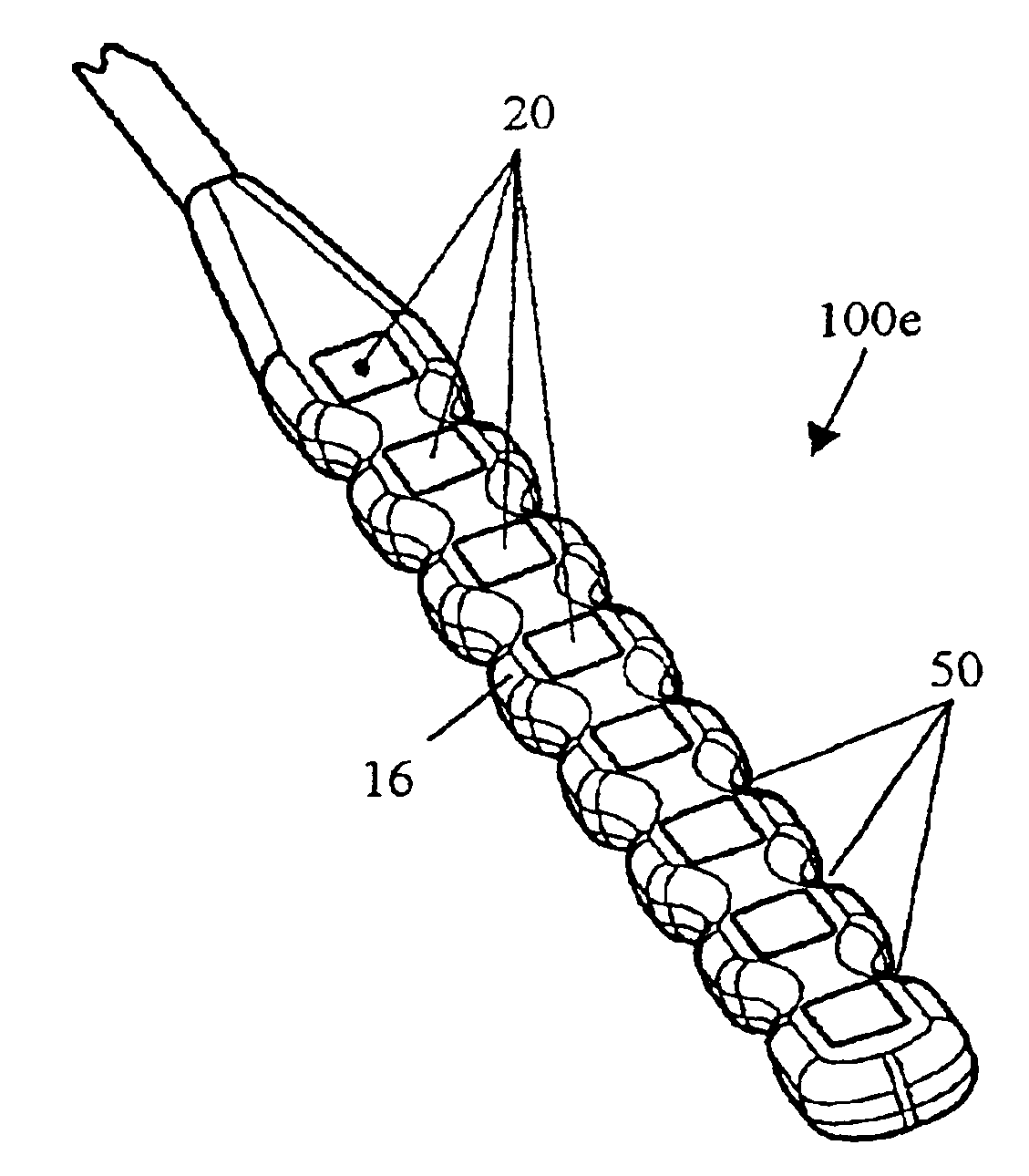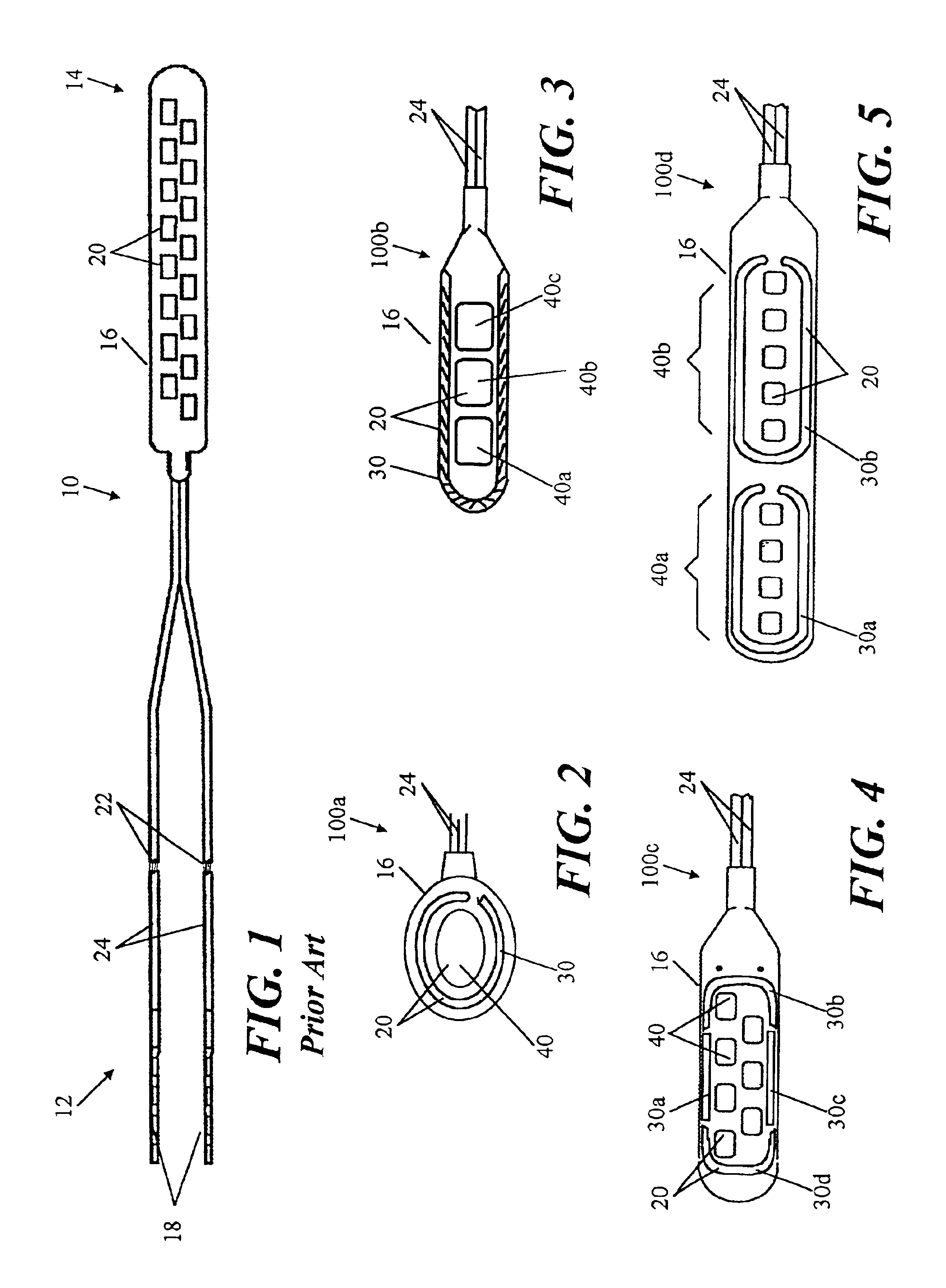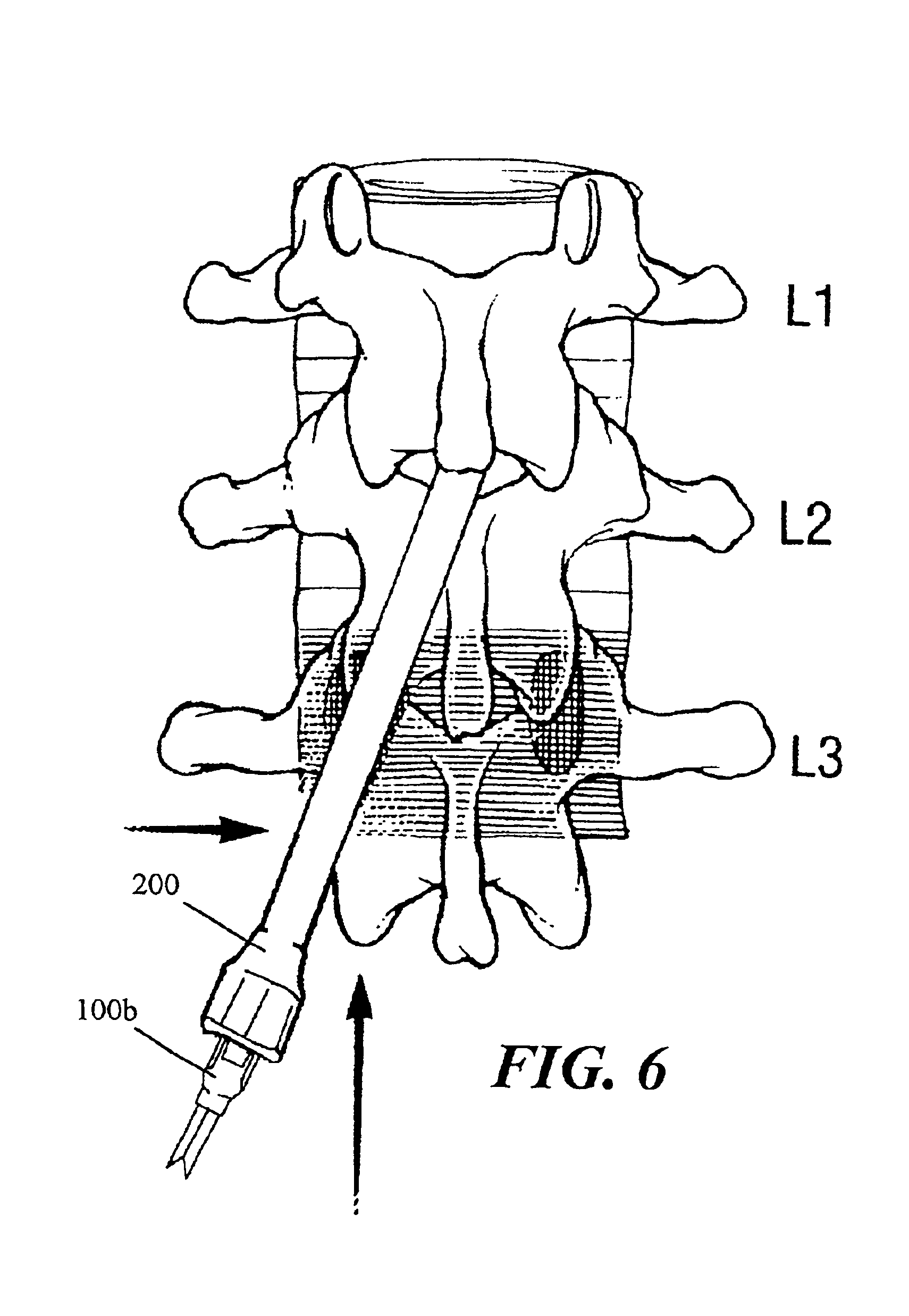Stimulation/sensing lead adapted for percutaneous insertion
a percutaneous insertion and electrode array technology, applied in the field of electrode array adaptability, can solve the problem of not offering an opportunity for electrode array variance, and achieve the effect of enhancing the flexibility of such lead and enhancing the steerability of such lead
- Summary
- Abstract
- Description
- Claims
- Application Information
AI Technical Summary
Benefits of technology
Problems solved by technology
Method used
Image
Examples
Embodiment Construction
[0040]Various embodiments, including preferred embodiments, will now be described in detail below with reference to the drawings.
[0041]In reference to FIG. 1, the illustrated laminotomy lead 10 includes a proximal end 12 and a distal end 14. The proximal end 12 includes a plurality of electrically conductive terminals 18, and the distal end 14 includes a plurality of electrically conductive electrodes 20 arranged within a flat, thin paddle-like structure 16. Typically, each terminal 18 is electrically connected to a single electrode 20 via a conductor 22; however, a terminal 18 can be connected to two or more electrodes 20.
[0042]Terminals 18 and electrodes 20 are preferably formed of a non-corrosive, highly conductive material. Examples of such material include stainless steel, MP35N, platinum, and platinum alloys. In a preferred embodiment, terminals 18 and electrodes 20 are formed of a platinum-iridium alloy.
[0043]The sheaths 24 and the paddle structure 16 are formed from a medica...
PUM
 Login to View More
Login to View More Abstract
Description
Claims
Application Information
 Login to View More
Login to View More - R&D
- Intellectual Property
- Life Sciences
- Materials
- Tech Scout
- Unparalleled Data Quality
- Higher Quality Content
- 60% Fewer Hallucinations
Browse by: Latest US Patents, China's latest patents, Technical Efficacy Thesaurus, Application Domain, Technology Topic, Popular Technical Reports.
© 2025 PatSnap. All rights reserved.Legal|Privacy policy|Modern Slavery Act Transparency Statement|Sitemap|About US| Contact US: help@patsnap.com



